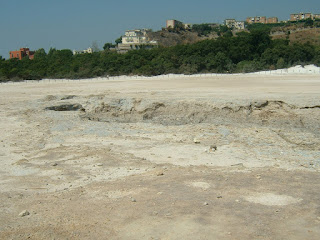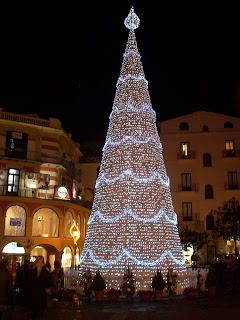Sad, short life of a Neapolitan princess
The youngest daughter of Ferdinand, King of Naples and Sicily, Princess Maria Antonia, was born on this day in 1784 at the Royal Palace in Caserta.
Princess Maria Antonia was named after her aunt, Marie Antoinette, the Queen of France, who was executed by guillotine in Paris in 1793.
| The Royal Palace in Naples |
Marie Antoinette was the favourite sister of the Princess’s mother, Maria Carolina of Austria, who became opposed to the military expansion of the new French republic as a result of her sister’s horrific death.
Princess Maria Antonia’s own fate was sealed when she became engaged to Infante Ferdinand, Prince of Asturias, who later became King Ferdinand VII of Spain.
She married him in Barcelona in 1802.
When she failed to provide Ferdinand with an heir, suffering two miscarriages, there were rumours that Maria Antonia, whose title was now Princess of Asturias, was plotting to poison both her mother in law, the Queen of Spain, and the Spanish Prime Minister. This was allegedly to avenge her aunt, Marie Antoinette, because Spain was becoming increasingly dominated by Napoleon.
The Queen of Spain encouraged the rumours and had the princess’s books and clothes searched.
Then, at the age of 21, Princess Maria Antonia suddenly died, supposedly of tuberculosis. There were rumours that she herself had been the victim of poisoning, but there was no real evidence.
The Princess was buried at El Escorial in Spain and her husband went on to marry three more times. His last wife was Maria Antonia’s own niece, Princess Maria Cristina of Naples and Sicily, who had been born a month before her death in 1806.
Travel tip:
The Royal Palace, where Princess Maria Antonia was born, was built in Caserta for King Charles VII. Work began in 1752 on what was to become the largest royal residence in the world. The architect, Luigi Vanvitelli, also designed a magnificent park with a huge waterfall for the palace, which is situated about 35 kilometres from Naples.
Travel tip:
The Royal Palace (Palazzo Reale) in Naples is another of the magnificent residences of the Kings of Naples. The palace is at the eastern end of Piazza del Plebiscito and dates back to 1600. It now houses a 30-room museum and the largest library in southern Italy, which are both open to the public.
Home









